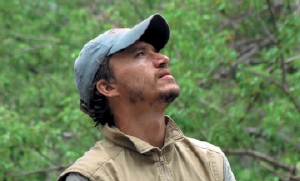 "SA is a hub for the international trade in wild-caught parrots from around the world" - Steve Boyes
"SA is a hub for the international trade in wild-caught parrots from around the world" - Steve Boyes
It’s no accident that 730 African Grey parrots died last December on an SA- bound flight or that 630 of these attractive, intelligent birds are languishing in quarantine in Kempton Park while an ownership squabble drags on.
SA is a hub for the international trade in wild-caught parrots from around the world, says Steve Boyes, the director of the World Parrot Trust Africa and a director of Africa Geographic magazine and news agency. “Over 3m wild-caught African parrots have been officially traded over the past 25 years — the real number is probably between 4m and 6m,” he says.
Boyes (32) has for the past three months being trying to broker a deal to safely transfer the Kempton Park birds to Uganda or Rwanda, where he has negotiated sanctuary for them. “We prefer Uganda because of the release there recently of 203 wild-caught African Greys from the DRC.”
However, a Limpopo breeder claims the haul, which came from the DRC via Mozambique and was confiscated at midnight by a military patrol on the Mpumalanga border, belongs to him. Boyes says confiscated wildlife automatically belongs to the state. According to press reports, while the department of agriculture, fisheries & forestry has asked Boyes’s trust to re-home the birds, the department of water & environmental affairs is stalling on the permit, leaving the deteriorating parrots in limbo.
Tracking the legal and illegal trade in wild-caught parrots across Africa throws up a murky world of armed poachers, corrupt officials, two-faced governments, ruthless traders and a gullible public.
It was while writing up his PhD thesis at the University of California (Berkeley) in 2006 that Boyes, a Capetonian, began to work for the World Parrot Trust, compiling a report on the trade in SA. He also holds a PhD in zoology based on his research on Africa’s most abundant parrot, Meyer’s Parrot, and before that took a master’s in environmental development (protected areas management) from the University of KwaZulu Natal and a BSc forestry (nature conservation) from Stellenbosch. Boyes lives in Hogsback in the Eastern Cape, where he is studying “Africa’s most endangered parrot”, the Cape Parrot.
Boyes says his work often draws him away from the scented Hogsback forests: “My time is shared between the Cape parrot project in Hogsback, saving African Greys from the threat of continued trade and helping the world celebrate Africa through our publications.”